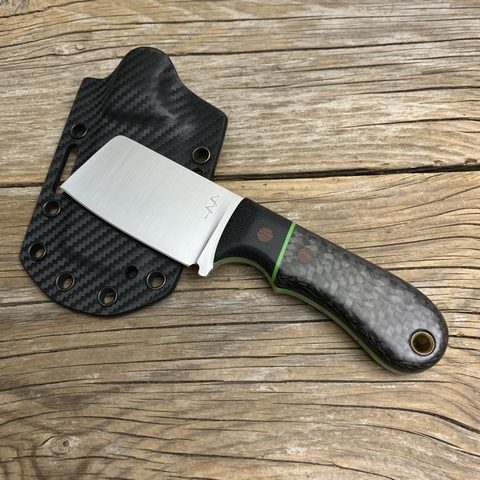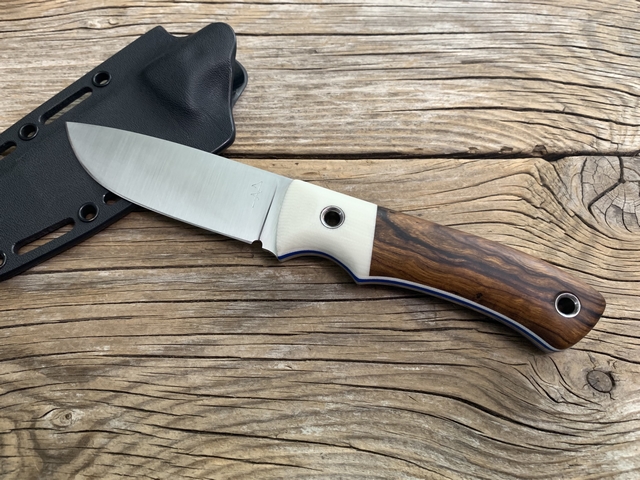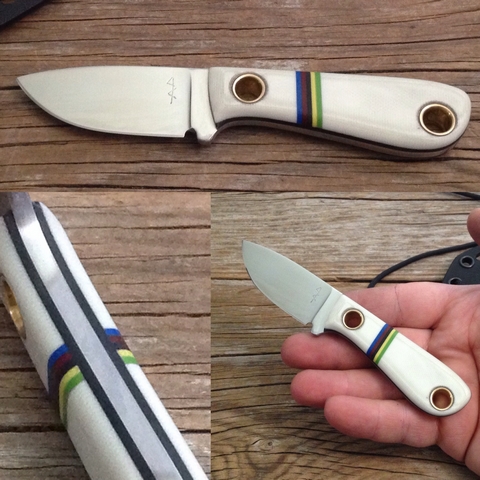
By Jared Kramer
G/flex® Epoxy is the adhesive I use almost exclusively for making knives. Years ago, I found out about G/flex from other knife makers. After reading about its properties compared to standard epoxies, I realized it suited my needs just about perfectly. A marine epoxy like the WEST SYSTEM® 105 Resin system is incredibly durable and would likely outlast my lifetime on most knives. However, the “flex” is the main reason I use G/flex instead.
When in use, knives can be subjected to brief but intense stress. Beyond the typical waterproof seal between the steel and handle material, the ability to flex—rather than crack or break—when blades and handles are stressed means the knife won’t come apart at a critical time, or in the useful life of the blade.

G/flex does cost a little more than standard epoxies but is worth the superior end product in my knife applications. I use G/flex to laminate multi-piece scales of varying materials, including difficult-to-glue hardwoods like cocobolo, ironwood, and more standard laminates like Micarta or G10. I then laminate to various blade steels, all sealed and bonded with G/flex.
This rubber-toughened epoxy also withstands the stress of frequent temperature changes. Working/hunting blades, even more than kitchen knives, are subjected to wild temperature swings outdoors. G/flex holds up well and bonds the laminate of dissimilar materials in the handle, the blade steel and even the solid handle pins or rivets that hold the knives together. When making knives, I use the best materials I can all the way down to the hardware and adhesive to hold it all together. G/flex has worked extremely well for me for a long time and I will continue using it into the foreseeable future.






